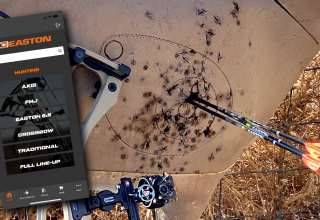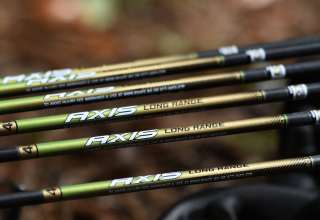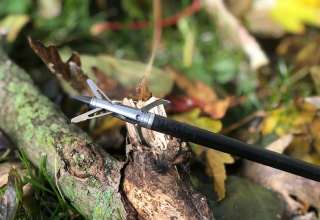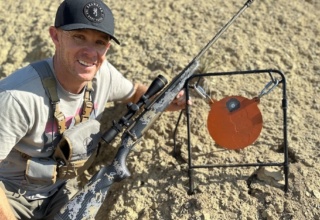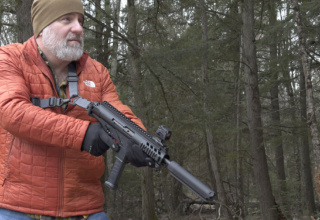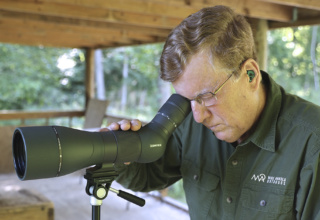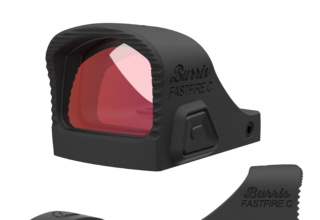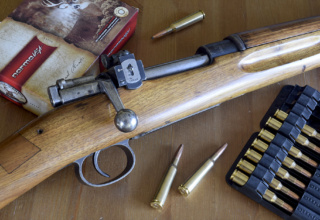In these times everyone seems to want to be outraged about something. So I understand it might not be exactly PC to say that for me skinny is unequivocally sexy—at least while choosing arrows for serious bowhunting pursuits! Ultra-slim diameter arrows have become the next big thing in archery; helping bowhunters facing real-world scenarios solve many reoccurring problems. Early in my bowhunting career this meant choosing a 2018 or 2117 aluminum arrow to shoot from my recurve bows, instead of a “fatter” 2216 or 2315 XX75 alloy shaft. Later skinny meant any form of carbon arrow. Today carbon has been put on a diet, offering the slimmest offerings yet in 5mm (X-Nock shafts, like Easton’s Axis) and 4mm (G-Nock diameters, FMJ Injexion).
I’m generally a bit conservative in my equipment approaches, being fairly resistant to flash-in-the-pan fads; as 40-plus years of successful bowhunting has taught me what works. “If it ain’t broke, don’t fix it’” is definitely a motto I live by. That said: I didn’t need much coaxing to immediately adopt the newest skinny arrows. Models like the Axis, which could be credited with getting the slim-arrow ball rolling; and especially Injexions have been some of my favorites since the moment they hit the marketplace. They hold too many bowhunting advantages to be ignored.
Less Wind Drift
 As kids, most of us held our hands out an open vehicle window, feeling the effects of speeding through atmosphere. This was an early lesson in aerodynamics; cup your hand sideways and wind pushed harder, turn it sideways, presenting a thinner profile, and it sliced through air. The same effect is at play with skinny arrows. If you’ve ever shot a bow in the wind you know it’s a major factor to accuracy. Besides the effect of buffeting equipment while attempting to aim, wind pushes arrows off course while in flight. The lower profile of skinny arrows gives wind less to push against, translating into less wind drift. This is especially pointed on longer shots—like that long stab at a prairie pronghorn or timberline velvet muley. This can make the difference between just nicking vitals for a killing shot, or an arrow pushed well back and into guts, making recovery dicey.
As kids, most of us held our hands out an open vehicle window, feeling the effects of speeding through atmosphere. This was an early lesson in aerodynamics; cup your hand sideways and wind pushed harder, turn it sideways, presenting a thinner profile, and it sliced through air. The same effect is at play with skinny arrows. If you’ve ever shot a bow in the wind you know it’s a major factor to accuracy. Besides the effect of buffeting equipment while attempting to aim, wind pushes arrows off course while in flight. The lower profile of skinny arrows gives wind less to push against, translating into less wind drift. This is especially pointed on longer shots—like that long stab at a prairie pronghorn or timberline velvet muley. This can make the difference between just nicking vitals for a killing shot, or an arrow pushed well back and into guts, making recovery dicey.
Less Friction
Skinnier arrows penetrate deeper than fatter shafts, all other factors remaining equal. This has everything to do with friction. Every object pushing through any medium is subjected to friction, be that the mere atmosphere it flies through on the way to the target, animal hide, bone and flesh. The cutting diameter of a leading broadhead relieves much of this friction, but less shaft slapping through wound channels always equals increased penetration. Breaching hide and muscle to slice through vitals is what terminal performance is all about, and while most of us shoot enough energy to shoot through game and into the ground beyond, stuff happens, especially following string jumps—stuff like shoulder blades or a deer that spins and requires breaching much more flesh and bone to reach vitals. This is even more important with the biggest game such as elk and moose, or those shooting marginal energy (youth or women shooters for instance). As a welcome fringe benefit, most low-diameter arrows include thick walls that create concentrated mass, this added weight also aiding penetration.
More Spin
 One aspect of skinny arrows many overlook is a smaller axis resulting in faster spin rates via smaller fletchings. Fletching helical or offset is vital to broadhead accuracy. Arrow rotation, like a bullet sent through barrel rifling, imparts gyroscopic stability to increase accuracy. The faster an object spins, generally the more stable it is in flight. Faster spin rates equal added stability and accuracy, especially with fixed-blade broadheads.
One aspect of skinny arrows many overlook is a smaller axis resulting in faster spin rates via smaller fletchings. Fletching helical or offset is vital to broadhead accuracy. Arrow rotation, like a bullet sent through barrel rifling, imparts gyroscopic stability to increase accuracy. The faster an object spins, generally the more stable it is in flight. Faster spin rates equal added stability and accuracy, especially with fixed-blade broadheads.
Do skinny arrows have any disadvantages? The only one I can think of is the grippers found on many bow quivers won’t clamp them securely, but other than that, there is much to be gained and nothing to be sacrificed from a standpoint of pure bowhunting performance on game—where it counts most.
- Gaining an Edge With Sharp Broadheads - November 17, 2017
- Using Scents to Create Higher-Odds Bow Shots - November 7, 2017
- Fundamental Crossbow Maintenance - October 25, 2017


